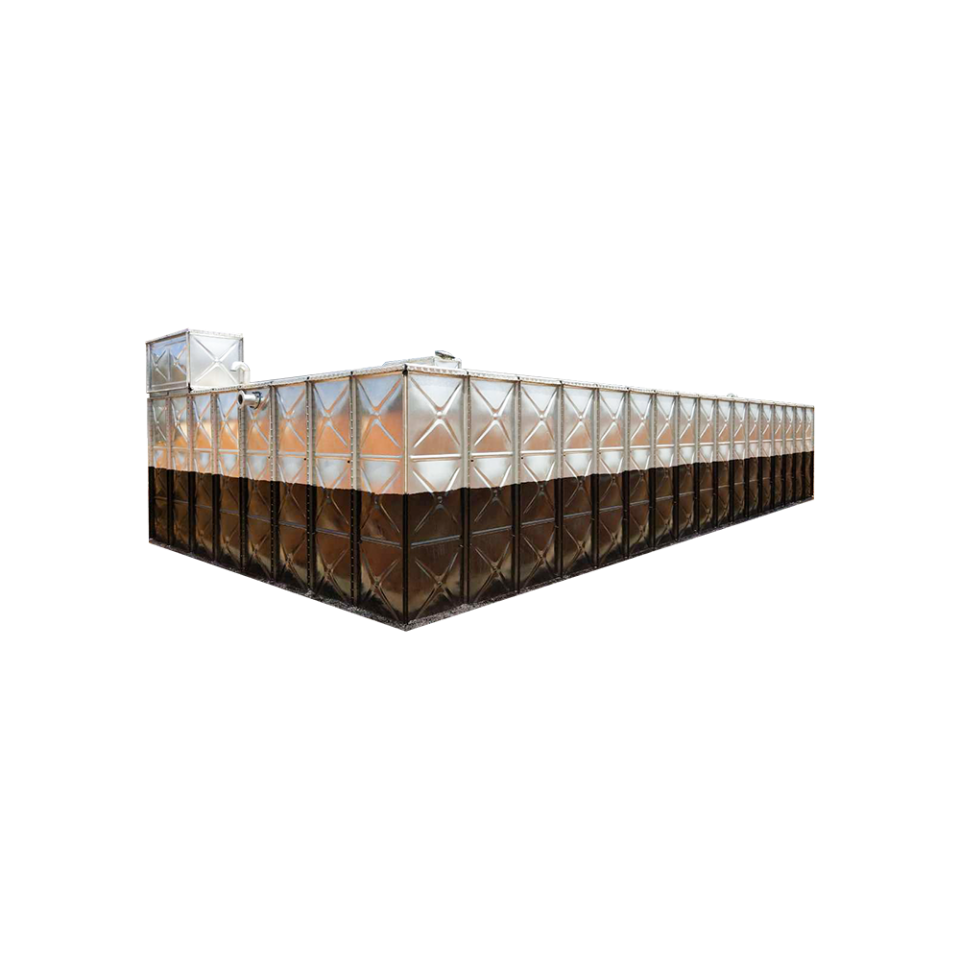Proprietary Coating and Chemical Resistance
Glass-Fused-to-Steel (GFS) tanks, also known as Glass-Lined-Steel or Enamel tanks, are constructed from steel panels coated with a durable porcelain enamel layer on both the interior and exterior surfaces. This coating is fused to the steel at high temperatures (Approx. 820∘C), creating a permanent, impermeable, and chemically resistant bond.
GFS technology offers a superior long-term, low-maintenance solution, especially in environments where the stored liquid or the external atmosphere is highly corrosive. The construction is modular and bolted, utilizing a specialized sealant at the joints to ensure leak-proof containment.
Specification Table: GFS Tank
| Construction | Modular Sectional, Bolted |
| Coating Material | Glass-Fused-to-Steel (Porcelain Enamel) |
| Coating Thickness | 250 μm to 450 μm (Typical) |
| Color | Standard Dark Green or Blue (Exterior) |
| Chemical Resistance | pH range 3 to 11 (Standard) |
| Application Temperature | −40∘C to +65∘C |
| Standards | AWWA D103-09 (Applicable for Welded Steel Tanks with Glass Coatings) |
Application Fields
- Storage of potable water and wastewater in municipal and remote systems.
- Industrial tanks for slurry, brine, and high-salinity water storage (superior corrosion resistance).
- Biogas and anaerobic digester tanks (high chemical resistance to process fluids).
- Storage for agri-food products and bulk liquids requiring a sterile surface.
- Fire water reserve in locations with high humidity or corrosive salt-air environments.
Engineering and Custom Fabrication
The fusion process is conducted in automated, high-temperature kilns under strict quality control to ensure uniform coating thickness and adhesion strength.
Customization Scope: Specialized coating formulations for extreme pH (acidic or alkaline) environments, custom nozzle placement, and the integration of internal mixers/agitators for slurry applications.
We provide detailed specifications compliant with international GFS standards, including spark testing of the glass layer to ensure no pinholes exist.




